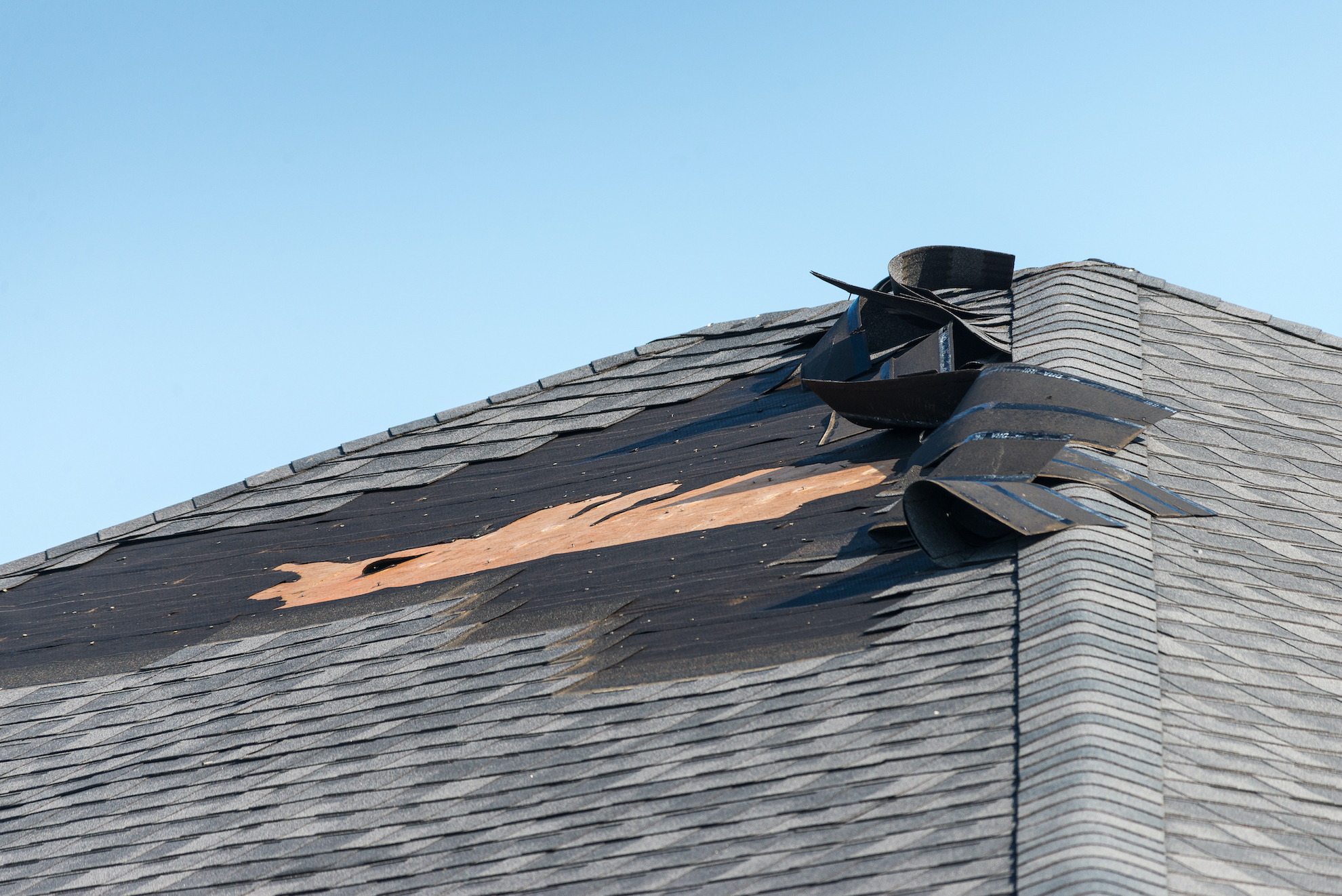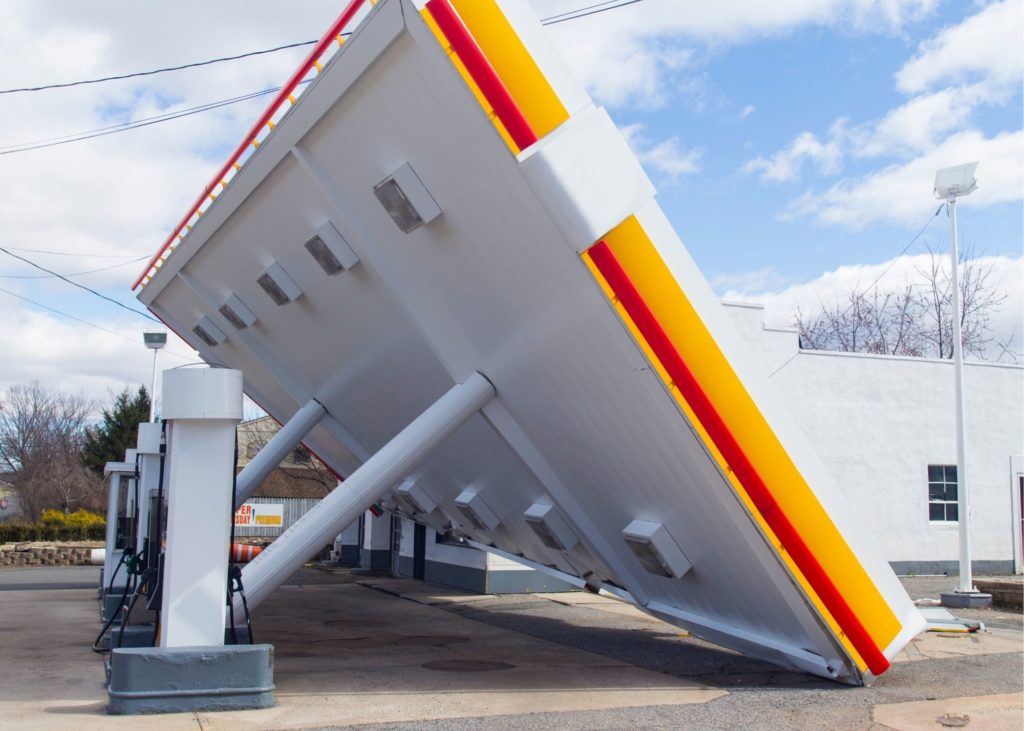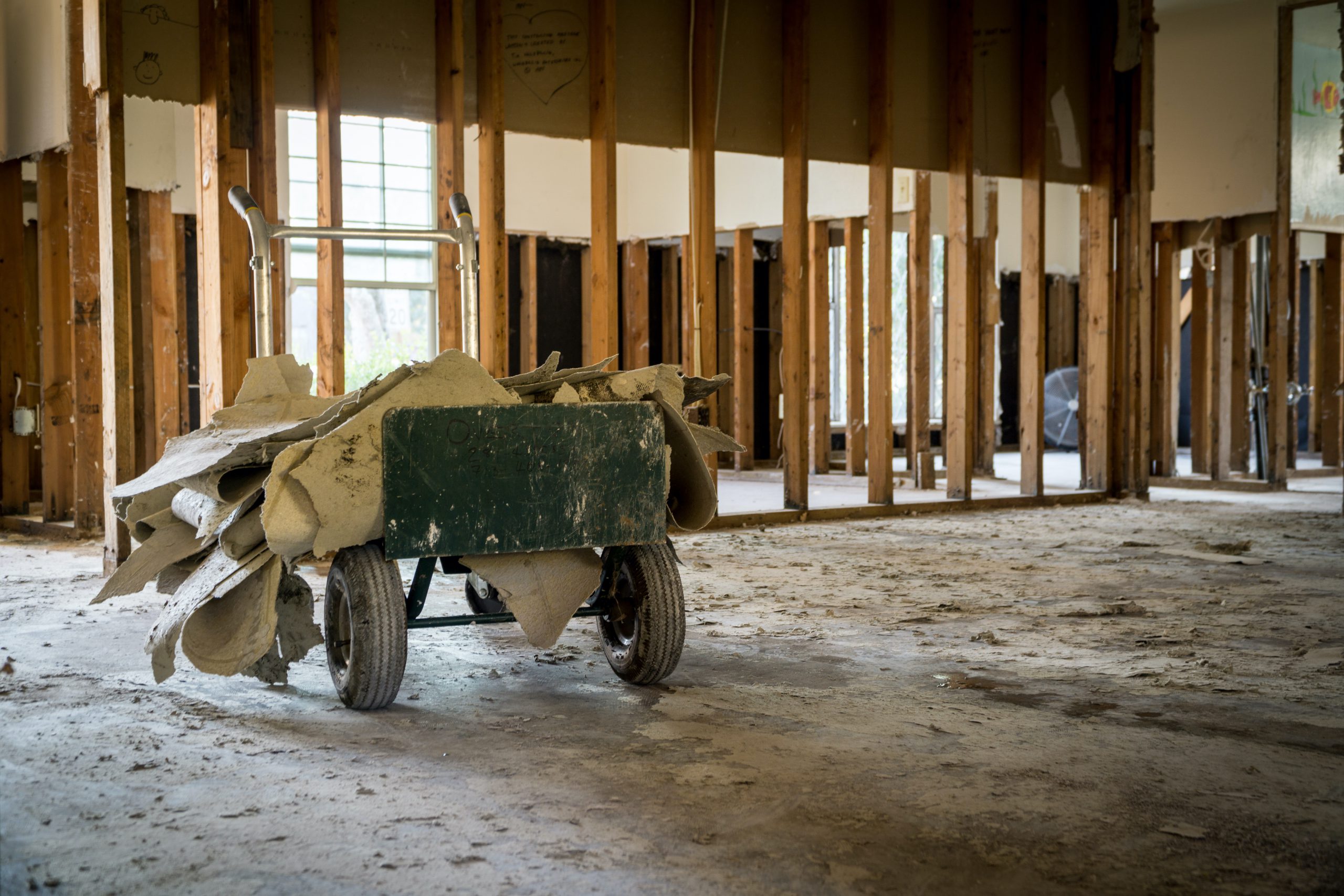
WIND DAMAGE CLAIMS ATTORNEY
Your Guide to Wind Damage Claims
Wind damage can create serious complications for your home, business, or other structures. The impact of wind damage can range from missing shingles or siding, to major internal structural problems due to sustained force.
Wind damage may be covered by your homeowner’s insurance policy, but before you file a claim, it’s a good idea to go over your policy and understand your rights. An experienced New Orleans wind damage insurance lawyer can help you to fila a insurance claim.
The Hidden Dangers of Wind Damage
Dangerous winds can send debris hurtling toward your home or other property. It can also knock down trees that crash through your roof or pull screens off your windows. If screens are damaged or removed, it’s important to replace them immediately. Your screens not only keep out bugs and debris, but also protect your glass from debris in the event of a storm.
In many cases, debris will leave a lasting impact even if you can’t see it. Siding can split or incur holes, leaving your home vulnerable to water damage. Dings and dents in the siding can compromise the integrity of your property’s structure. This leaves you more vulnerable to damage from future high winds or storms.
Any type of damage, even small spots that you don’t notice until you get up close, will need to be repaired. Your home is an investment, and making necessary repairs is part of maintaining its value and longevity.
Only an experienced wind damage claims lawyer has the answers you need.

Signs of Wind Damage to Look For
Wind damage can take many forms and affect every nook and cranny of your property. Once a severe storm passes and it’s safe to go outside, take a walk of your property and look for the following signs:
On Your Roof
Your roof has two main roles: to protect your home from the elements and to direct water away from your home. When your roof sustains wind damage, both of these functions are compromised. Even storms that don’t produce rain or hail can damage your roof. And since most people don’t spend much time on their roofs, this damage can often go unnoticed until a more serious problem occurs.
Look for the following signs of wind damage to your roof:
- Slightly lifted shingles
- Loose or missing shingles
- Indoor water leaks
- Loss of granules on shingles
- Damaged soffits or fascia
On the Siding
Wind damage to your home’s siding can be hard to spot in some cases. Small cracks or holes can go undetected until they turn into more serious problems. Some signs to look for include:
- Missing pieces of siding
- Cracked siding
- Holes in the siding
- Bulging, loose, or warped siding
On Your Windows
The most common type of wind damage to windows is broken glass. This happens when the winds are strong enough to fling debris directly into the glass, causing it to break. Other signs to look for include:
- Broken or missing screens
- Damage or dents on the window frame
- Cracks, chips, or holes in the paint
- Water leaks

Remember, insurance companies are in business to make a profit. However, this shouldn’t be done at your expense at such a critical time.
What to Do When Your Property Sustains Wind Damage
Wind damage can vary in level of severity. In some cases, you’ll be thankful that wind damage is the only type of damage you sustained. In other cases, winds that have knocked trees onto your roof or cause other serious damage will need to be addressed immediately.
Regardless of how severe your situation is, the first thing you’ll want to do is take photos of the damage you find while it’s fresh. If the damage gets worse, make sure you document these changes, too.
The next step is to consult your homeowner’s insurance policy. It’s a good idea to file your claim as soon as possible. This is because if your home sustained wind damage, chances are your neighbors’ home are in a similar condition. Insurance companies with a mass influx of claims may have slower processing times, which could delay you from getting funds to start cleaning up.
Will Insurance Cover Wind Damage?
Most homeowner’s insurance policies will include wind damage coverage. The main exception is for homeowners who live near the coast. Wind damage coverage is usually offered as an add-on option and not part of the core insurance coverage in this case.
However, there may be other unique limitations or exclusions that could prevent you from getting a fair settlement. For example, some policies may only cover wind damage to the dwelling but not any other personal property, such as a storage shed, greenhouse, or vehicle.
To navigate the process, it can be helpful to consult with a legal professional with experience in wind damage claims. This may give you an optimal chance to recover the compensation you’re rightfully owed.
What to Do If Insurance Won’t Cover Wind-Related Property Damage
When you file any type of insurance claim, you will likely have to pay a deductible before insurance will pay anything. Your policy may also have a coverage limit that may or may not cover the remaining cost of the damage.

It can be disheartening and frustrating when insurance companies deny your claim or don’t provide the level of compensation you feel you’re entitled to. Remember, insurance companies are a business and it’s their job to maintain profitability as much as possible. However, this shouldn’t be done at your expense at a critical time.
If insurance has denied your claim or is not meeting your expectations, legal counsel may be a suitable option.
Understanding Wind Speed Categories
Wind speed is a crucial factor in determining the potential for damage during storms. Understanding these categories can help you better prepare for and respond to wind-related hazards. Here’s a breakdown of common wind speed categories and their potential impacts:
1. Light Breeze (4-7 mph)
- Leaves rustle, wind felt on exposed skin
- No damage expected
2. Moderate Breeze (8-18 mph)
- Small branches move, raises dust and loose paper
- Minimal risk of damage
3. Fresh Breeze (19-24 mph)
- Small trees sway
- Potential for minor cosmetic damage to property
4. Strong Breeze (25-31 mph)
- Large branches in motion, whistling heard in overhead wires
- Potential for minor structural damage (e.g., loose shingles)
5. Near Gale (32-38 mph)
- Whole trees in motion
- Risk of moderate property damage increases
6. Gale (39-46 mph)
- Twigs break off trees, moving cars veer on road
- Considerable risk of property damage
7. Strong Gale (47-54 mph)
- Slight structural damage occurs
- High risk of significant property damage
8. Storm Force (55-63 mph)
- Trees uprooted, considerable structural damage
- Severe property damage likely
9. Violent Storm (64-72 mph)
- Widespread damage to structures
- Extremely dangerous conditions
10. Hurricane Force (73+ mph)
- Catastrophic damage, buildings destroyed
- Life-threatening situation
Hurricane Categories (Saffir-Simpson Scale)
Hurricanes are further categorized based on their sustained wind speeds:
- Category 1 (74-95 mph): Very dangerous winds will produce some damage
- Category 2 (96-110 mph): Extremely dangerous winds causing extensive damage
- Category 3 (111-129 mph): Devastating damage will occur
- Category 4 (130-156 mph): Catastrophic damage will occur
- Category 5 (157 mph or higher): Catastrophic damage will occur
Tornadoes (Enhanced Fujita Scale)
Tornadoes are measured on a different scale due to their intense, localized nature:
- EF0 (65-85 mph): Light damage
- EF1 (86-110 mph): Moderate damage
- EF2 (111-135 mph): Considerable damage
- EF3 (136-165 mph): Severe damage
- EF4 (166-200 mph): Devastating damage
- EF5 (>200 mph): Incredible damage
Understanding these categories can help you:
- Assess potential risks during weather events
- Make informed decisions about preparation and evacuation
- Better understand weather warnings and advisories
- Communicate more effectively with insurance providers about wind-related damage
Remember, wind speeds can vary greatly within storms, and other factors like duration, direction changes, and accompanying precipitation can all influence the level of damage. Always follow local weather advisories and evacuation orders for the most up-to-date and location-specific guidance.
Frequently Asked Questions: Wind Damage Claims in New Orleans
Q: Why should I consider hiring a wind damage claims lawyer in New Orleans?
A: A wind damage claims lawyer can help New Orleans residents navigate the complex process of filing insurance claims, especially given the city’s unique history with storms and flooding. They can ensure you receive fair compensation and protect your rights if your insurance company tries to avoid paying or undervalues your claim.
Q: How does New Orleans’ history and location affect wind damage claims?
A: New Orleans’ location near the Mississippi River and the Gulf of Mexico makes it particularly vulnerable to hurricanes and strong storms. The city’s rich history, including the French Quarter and other historic neighborhoods, can complicate claims due to the age and unique architecture of many buildings. A local attorney understands these factors and how they impact claims.
Q: What types of wind damage are typically covered by insurance in New Orleans?
A: Most insurance policies cover wind damage to roofs, siding, and other structural elements. However, in New Orleans, it’s crucial to understand the distinction between wind and flood damage, as flood damage often requires separate coverage. Personal property damaged by wind may also be covered.
Q: How can I tell if my insurance company is acting in bad faith?
A: Signs of bad faith include unreasonable delays in processing your claim, denying your claim without proper investigation, or offering a settlement significantly lower than the actual damage. If you suspect bad faith, consult with an attorney who can assess your situation.
Q: What should New Orleans residents do immediately after storm damage occurs?
A: Document all damage with photos and videos, make temporary repairs to prevent further damage, keep all receipts, and contact your insurance provider immediately. Don’t wait for an adjuster to arrive before documenting or making emergency repairs.
Q: How long do I have to file a wind damage claim in New Orleans?
A: The time limit can vary depending on your policy and the extent of the damage. However, it’s best to file as soon as possible after the damage occurs. Some policies may have specific deadlines, especially for hurricane-related claims.
Q: What if my claim is denied or the settlement offer is too low?
A: If your claim is denied or the offer is insufficient, you have the right to dispute the decision. A wind damage claims attorney can help you gather evidence, negotiate with the insurer, and if necessary, file a lawsuit to seek fair compensation.
Q: How does the claims process differ for businesses in the French Quarter versus residential properties in other areas?
A: Commercial properties in historic areas like the French Quarter may have special considerations due to zoning laws and historical preservation requirements. Residential claims in other neighborhoods might be more straightforward but could still be complex depending on the property’s age and construction.
Q: Can I get assistance from the federal government for wind damage in New Orleans?
A: In some cases, especially after major storms or hurricanes, federal assistance through FEMA may be available. However, this is typically separate from your insurance claim and may have different requirements and limitations.
Q: How do New Orleans attorneys help with the recovery process after significant storms?
A: Local attorneys understand the city’s unique challenges, from dealing with multiple claims after major events like Hurricane Katrina to navigating the complexities of repairing historic structures. They can help you maximize your settlement, deal with contractors, and ensure your rights are protected throughout the recovery process.
Q: What evidence do I need to support my wind damage claim in New Orleans?
A: Crucial evidence includes photos and videos of the damage, weather reports from the time of the storm, receipts for any emergency repairs or temporary housing, and a detailed inventory of damaged personal property. An experienced attorney can help you gather and present this evidence effectively.
Q: How can I protect myself from future wind damage claims in New Orleans?
A: Review and update your insurance policy regularly, consider additional coverage for hurricane or flood damage, maintain your property to minimize potential damage, and keep an up-to-date inventory of your belongings. Many New Orleans residents also invest in storm shutters or impact-resistant windows.
Q: Do most New Orleans law firms offer a free consultation for wind damage claims?
A: Yes, many law firms in the New Orleans area offer a free initial consultation to assess your case. This allows you to understand your options without financial commitment.
Q: How long does it typically take to settle a wind damage claim in New Orleans?
A: The timeline can vary greatly depending on the extent of the damage, the complexity of the claim, and the cooperation of your insurance company. Simple claims might be settled in a few weeks, while more complex cases, especially those involving litigation, could take months or even years.
Remember, every wind damage claim is unique, especially in a city with as rich a history and as complex a relationship with storms as New Orleans. If you’re unsure about any aspect of your claim, don’t hesitate to contact a local attorney who specializes in this area of law.
Contact Pandit Law for Help with Wind Damage Claims
At Pandit Law, our team has years of experience in helping homeowners and business owners file wind damage claims. We understand the unique circumstances that arise with wind damage claims and the complex language insurance companies use that could confuse or delay the process.
Let us put our years of experience to work for you ― contact us today for a free consultation.
Pandit Law
Hancock Whitney Center
701 Poydras Street
Suite 3950
New Orleans, LA 70139
Call at: (504) 323-3045